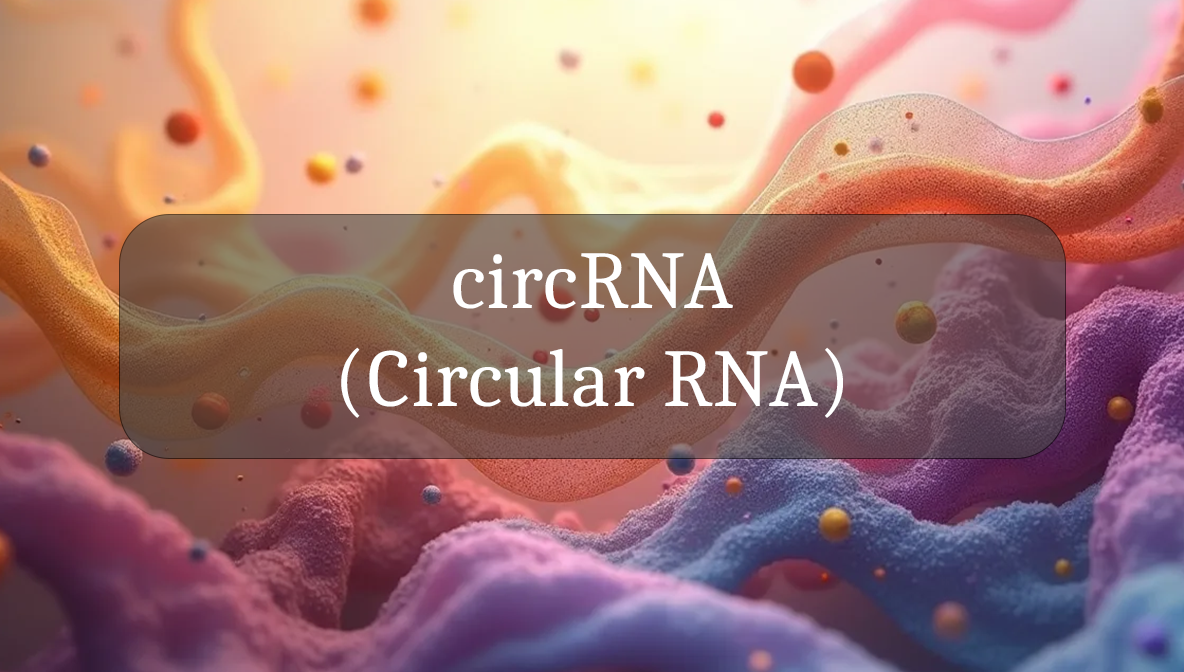The Hidden Regulators of Your Cell Health
Circular RNA, or circRNA, might sound like a futuristic concept, but it’s actually a fascinating type of molecule in your cells that helps keep your body running smoothly. Unlike regular RNA, which acts like a straight-line messenger, circRNA forms little loops that quietly fine-tune how your cells work. For health-conscious folks, understanding circRNA can inspire choices that support your energy, immunity, and long-term wellness. Let’s dive into what circRNA is, how it impacts your health, and how you can nurture it for daily vitality!
Chemical Identity and Type
Circular RNA is a special kind of RNA molecule, a cousin to the messenger RNA (mRNA) that helps turn your DNA’s instructions into proteins. Unlike mRNA, which is linear, circRNA forms closed loops, making it super stable and long-lasting in your cells. These loops act like tiny regulators, helping control how genes are turned on or off and influencing processes like cell growth, repair, and communication. Think of circRNA as a behind-the-scenes manager, keeping your cells balanced and healthy.
Biological Role and Benefits
CircRNA plays a surprising number of roles in your body’s wellness:
- Gene Regulation: CircRNA acts like a sponge, soaking up molecules that might over- or under-activate genes, helping your cells function properly.
- Immune Support: It helps fine-tune your immune system, ensuring it responds appropriately to germs without overreacting.
- Cell Protection: CircRNA can protect cells from stress, supporting repair and resilience, which is key for healthy aging.
- Brain Health: Some circRNAs are especially active in the brain, supporting memory, learning, and mood balance.
- Metabolic Balance: By regulating genes, circRNA helps your body process nutrients and maintain energy levels.
Healthy circRNA function means your cells can adapt, repair, and thrive, supporting everything from your energy to your immune defenses.
Dietary or Natural Sources
CircRNA isn’t something you eat or find in food—it’s made naturally by your cells. However, you can support the processes that create and maintain circRNA with these nutrient-rich choices:
- Antioxidant-Rich Foods: Berries, leafy greens, and nuts (rich in vitamins C and E) protect cells from damage, supporting circRNA stability.
- Healthy Fats: Omega-3s from salmon, walnuts, or flaxseeds nourish cell membranes, where circRNA works.
- Whole Grains and Legumes: These provide B vitamins (like folate) that support DNA and RNA processes.
- Fermented Foods: Yogurt, kefir, or sauerkraut promote a healthy gut, which may indirectly support circRNA by reducing inflammation.
A balanced diet creates a cell-friendly environment for circRNA to do its job.
Signs of Imbalance or Dysfunction
CircRNA dysfunction is hard to spot directly, but research suggests it may show up as:
- Fatigue: Feeling tired due to disrupted cell energy processes.
- Weak Immunity: Frequent colds or slow recovery from illness.
- Brain Fog: Trouble with focus, memory, or mood, as circRNA is key in brain cells.
- Inflammation: Unexplained aches or chronic inflammation, linked to poor gene regulation.
- Aging Signs: Premature wrinkles or low energy, as circRNA helps cells stay resilient.
These symptoms can have many causes, so if they persist, consult a healthcare provider to explore underlying issues.
Supporting Optimal Levels or Function
To keep your circRNA functioning well, try these evidence-based tips:
- Eat Anti-Inflammatory Foods: Include turmeric, green tea, or dark chocolate to reduce cell stress and support circRNA stability.
- Exercise Regularly: Moderate activities like walking, cycling, or yoga boost cell health and gene regulation.
- Prioritize Sleep: Aim for 7–9 hours of quality sleep to allow cells to repair and maintain RNA processes.
- Manage Stress: Meditation, deep breathing, or journaling can lower stress hormones that disrupt circRNA function.
- Limit Toxins: Avoid smoking, excessive alcohol, or processed foods, which can harm cells and RNA.
Small lifestyle changes can create a supportive environment for circRNA and overall cell health.
Safety, Interactions, and Precautions
CircRNA itself is safe—it’s a natural part of your cells. However, certain factors can disrupt its function:
- Oxidative Stress: Too many free radicals (from poor diet or pollution) can damage RNA. Eat antioxidant-rich foods to counter this.
- Chronic Stress: High cortisol levels may interfere with circRNA’s regulatory roles. Practice stress reduction daily.
- Environmental Toxins: Pollutants or UV exposure can harm cells and RNA. Use sunscreen and choose organic produce when possible.
- Medications: Some drugs (like chemotherapy agents) may affect RNA processes. Always discuss medications with your doctor.
Protecting circRNA means minimizing these stressors and prioritizing cell-friendly habits.
Fun Fact
Did you know circRNA was once thought to be “junk” RNA? Scientists now know these tiny loops are superstars, regulating genes and even helping fight viruses in ways we’re still discovering!
Citations
- National Institutes of Health (NIH): Circular RNAs in Health and Disease.
- Mayo Clinic: Cellular Health and Aging Overview.
- Cleveland Clinic: Nutrition and Gene Regulation.
- World Health Organization (WHO): Diet and Chronic Disease Prevention.
- USDA: Dietary Guidelines for Americans – Nutrient-Dense Foods.

